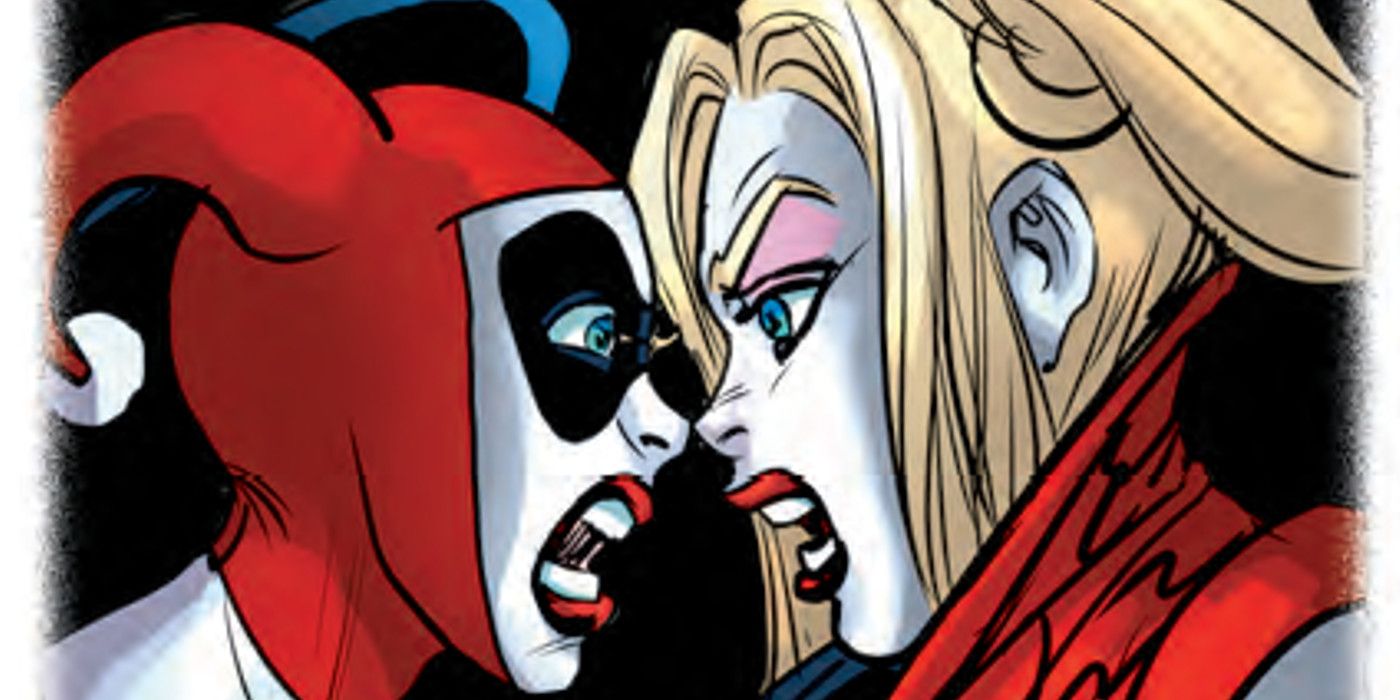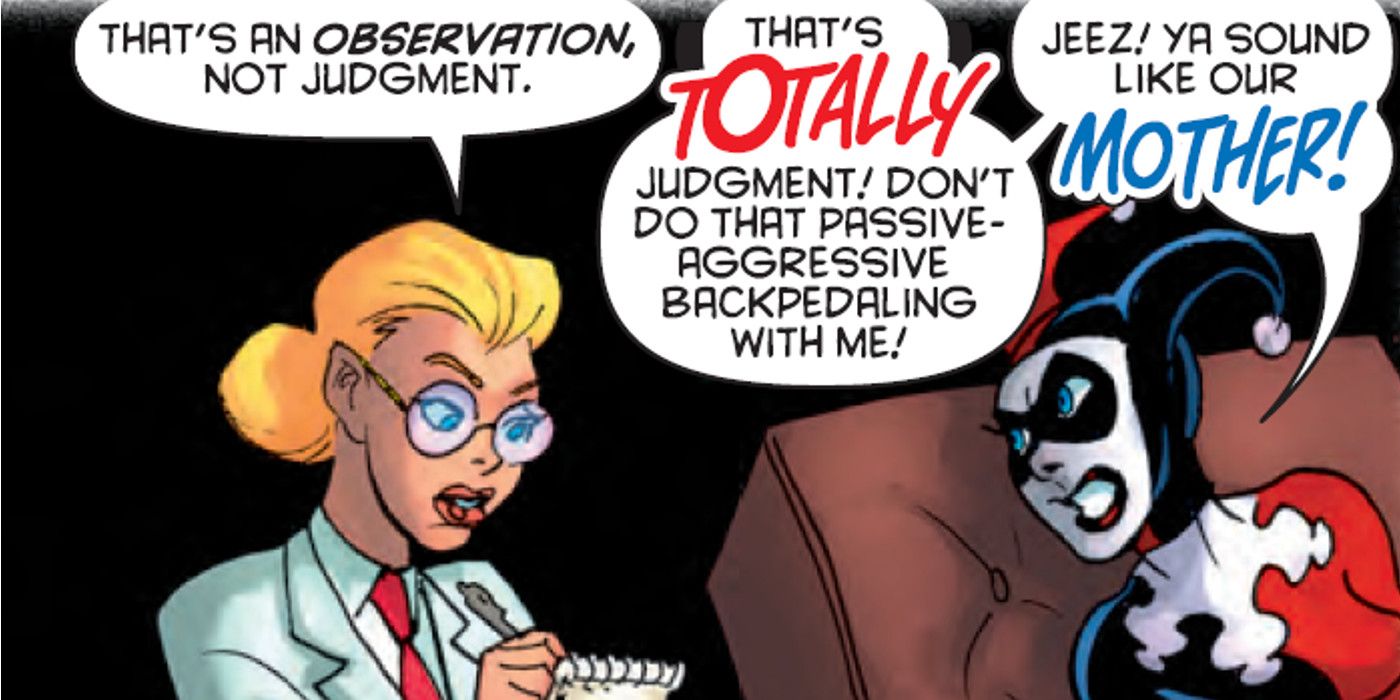WARNING! The following article contains SPOILERS for Harley Loves Joker #2.
-
A new story from Harley Quinn co-creator Paul Dini adds a new wrinkle to one of the most controversial characters in modern comics. The final issue of Harley Loves Joker suggests that Dr. Harleen Quinzel has developed Disassociate Identity Disorder. Harley didn't "turn into" her criminal alter ego... that part of her personality developed into another person entirely.
The question of Harley Quinn's sanity (or lack thereof) has been hotly debated since her first appearance on Batman: The Animated Series. Originally created as a tribute to the various gangster molls who accompanied villains on the Batman TV series starring Adam West, Harley took on a life of her own. Soon, she was starring in her own solo episodes independent of The Joker. Many have decried Harley Quinn as a classic example of Stockholm Syndrome - when a hostage comes to feel they truly love their captor or abuser. Others think Harley is just as mentally ill as "her puddin.'"
Now, the character's co-creator has given his opinion.
Related: The 'Classic' Harley Quinn Returns To DC Comics
Dini, for his part, seems to agree with the later assessment that mental illness is largely to blame for Harley's fate, and not an abusive relationship. He depicts Harley and Harleen as separate people living inside of the femme fatale's head, who discuss what they should be doing as the events of the book progress. The main conflict of the issue lies between Harley and The Grison - a former colleague of Dr. Harleen Quinzel turned animal/woman hybrid, who has endeared herself to The Joker, worming her way into their gang after months of being a fierce rival.
Joker's sudden favoring of The Grison inspires Harley to leave him for good - an action which Harleen cheers enthusiastically. When Harley stumbles across a recording from The Joker while packing her bags, revealing that his sudden affection for The Grison is all part of a plan to get revenge on her for stealing from them, she changes her mind about leaving and Harleen finally has enough.
Harleen suddenly transforms into a version of Harley who resembles the modern version of Harley Quinn in the reality of DC Comics Rebirth. Harleen rips Harley apart as a codependent doormat, saying that she was what Harley could become if she rid herself of The Joker once and for all. Harleen urges Harley to go through with her plan to leave Joker this time, but Harley can't do it. Disgusted, Harleen fades away into nothingness, telling Harley that she'll see her when she grows up... if they live that long.
Despite the general comedic tone of this story, it is heartening to see that Paul Dini has put some thought into his most famous creation and given his apparent blessing to those who developed Harley into a different, more independent character than she was originally. While this is unlikely to do much to solve the debate between Harley Quinn fans as to which version of Harley Quinn is the best, it does offer food for thought for those who like to chronicle how different comic book characters have changed over time.
If nothing else, the story is an amusing throwback to Batman: The Animated Series and features a classic ending that is sure to put a smile on the faces of fans of The Joker and Harley. Whichever versions they like best.
More: Joker & Harley Quinn Finally Get Their TRUE Love Story
Harley Loves Joker #2 is now available from DC Comics.


